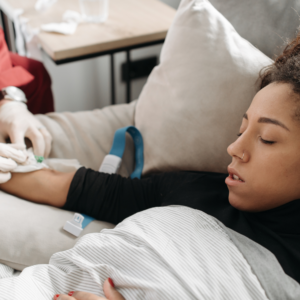Human Metapneumovirus (HMPV) is a respiratory pathogen that has recently garnered global attention due to a surge in cases, particularly in China. This article delves into the latest developments concerning HMPV, its implications, and the responses from various countries, including India.
Understanding Human Metapneumovirus (HMPV)
HMPV is a negative-sense single-stranded RNA virus belonging to the Pneumoviridae family. First identified in 2001 in the Netherlands, it is known to cause respiratory tract infections, especially in young children, the elderly, and immunocompromised individuals. Symptoms often resemble those of the common cold or flu, including cough, fever, nasal congestion, and fatigue. In severe cases, it can lead to bronchitis or pneumonia.
Recent Surge in HMPV Cases in China
In December 2024, China reported a significant increase in HMPV infections. Data from the Chinese Center for Disease Control and Prevention indicated that HMPV accounted for 6.2% of positive respiratory illness tests and 5.4% of related hospitalizations during the week of December 16 to 22, surpassing other viruses like COVID-19, rhinovirus, and adenovirus. Hospitals, particularly children’s facilities in Hunan province and surrounding areas, have been overwhelmed with patients exhibiting flu-like symptoms. Unverified reports suggest that crematoriums and funeral homes are also experiencing increased activity, reminiscent of the early days of the COVID-19 pandemic.
Global Response and Concerns
The rise in HMPV cases in China has prompted neighboring countries to monitor the situation closely. Malaysia reported an increase in HMPV cases from 225 in 2023 to 327 in 2024. In India, health authorities have confirmed three cases: two in Karnataka and one in Gujarat. The Indian Council of Medical Research (ICMR) detected these cases during routine surveillance for respiratory pathogens. Notably, the affected individuals are infants aged between two to eight months, all presenting with bronchopneumonia. Health officials emphasize that HMPV is not a new pathogen and that the public should not panic. Regular flu shots or the three-dose COVID-19 vaccination are believed to offer some immunity against HMPV.
Preventive Measures and Public Health Advisory
In response to the situation, the Directorate of Medical Education in Karnataka issued an advisory titled “Do Not Panic, Be Aware,” urging the public to remain calm and informed. Health experts recommend standard preventive measures similar to those for other respiratory infections:
- Hand Hygiene: Regularly wash hands with soap and water or use hand sanitizers.
- Respiratory Etiquette: Cover mouth and nose when coughing or sneezing.
- Avoid Close Contact: Maintain distance from individuals exhibiting symptoms of respiratory illness.
- Stay Informed: Keep abreast of updates from health authorities and adhere to recommended guidelines.
Conclusion
While the surge in HMPV cases, particularly in China, is a cause for vigilance, health authorities worldwide, including in India, are monitoring the situation closely. The public is advised to follow standard preventive measures and stay informed through official channels. As always, early medical consultation is recommended for individuals, especially young children and the elderly, exhibiting severe respiratory symptoms.




